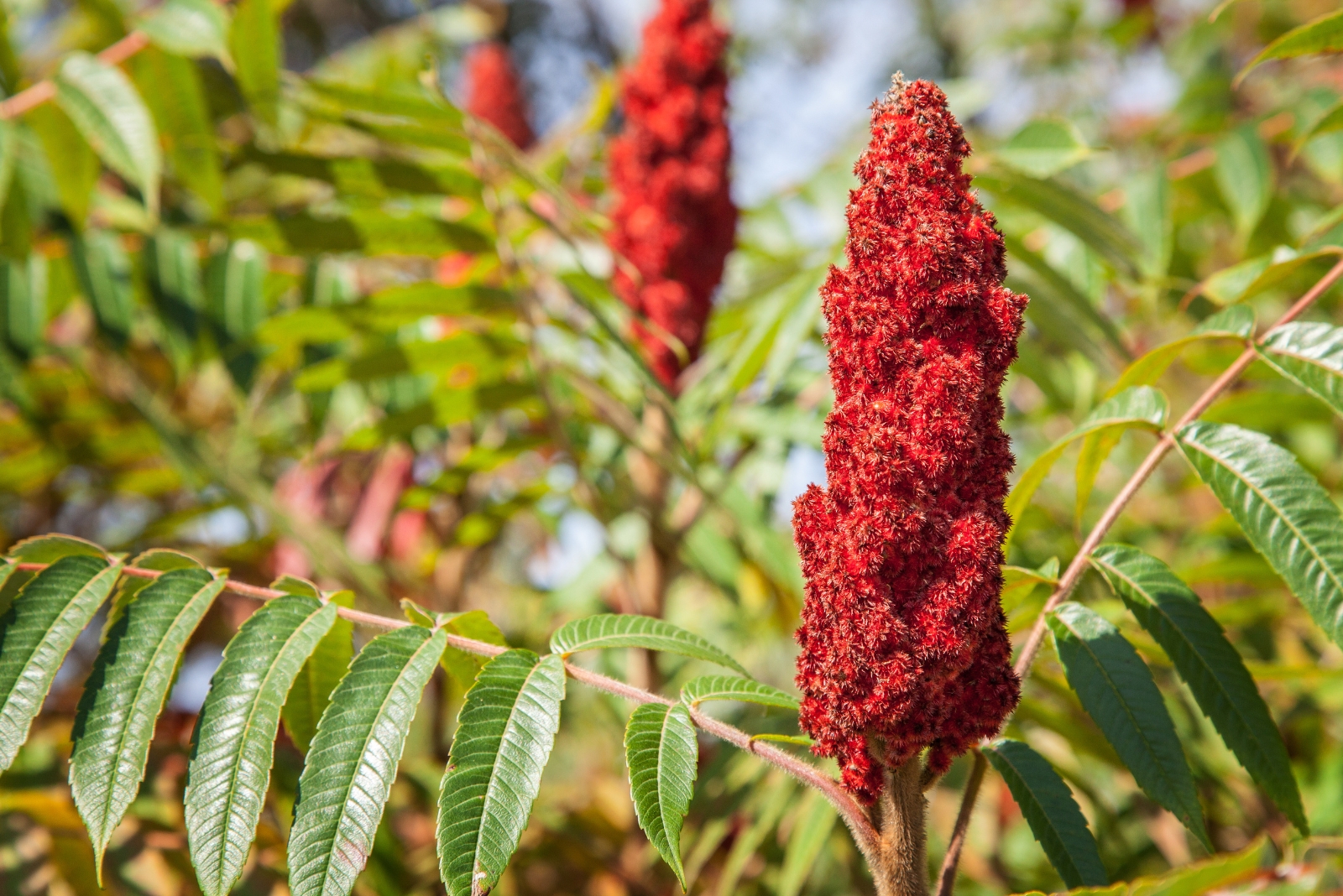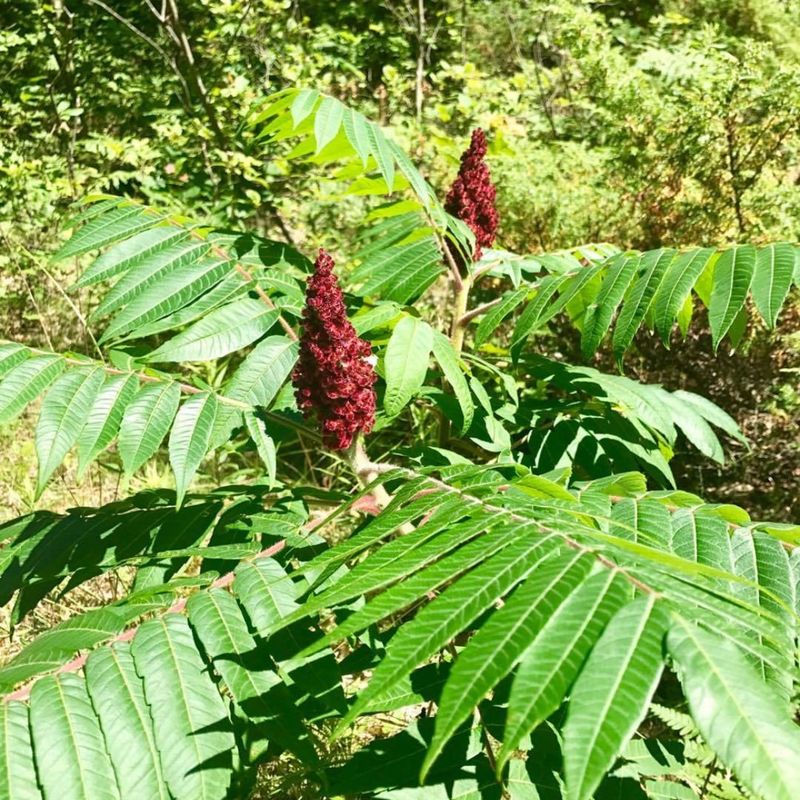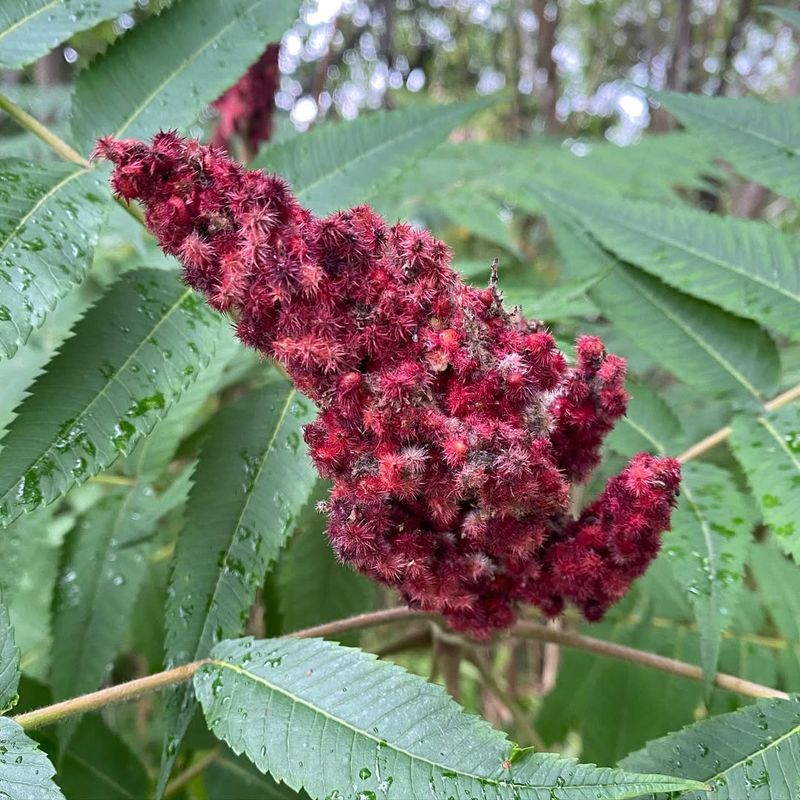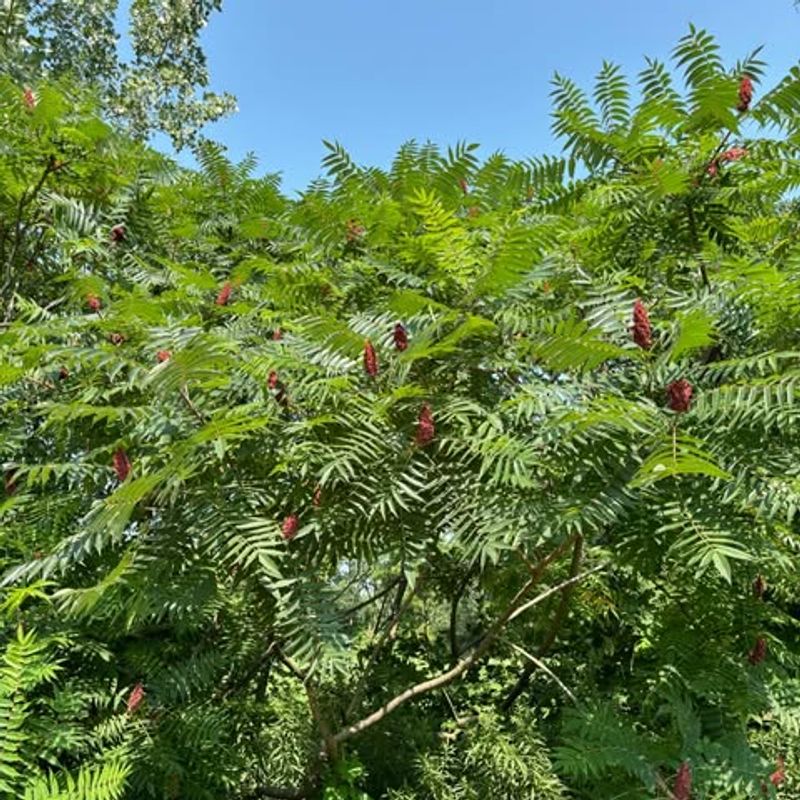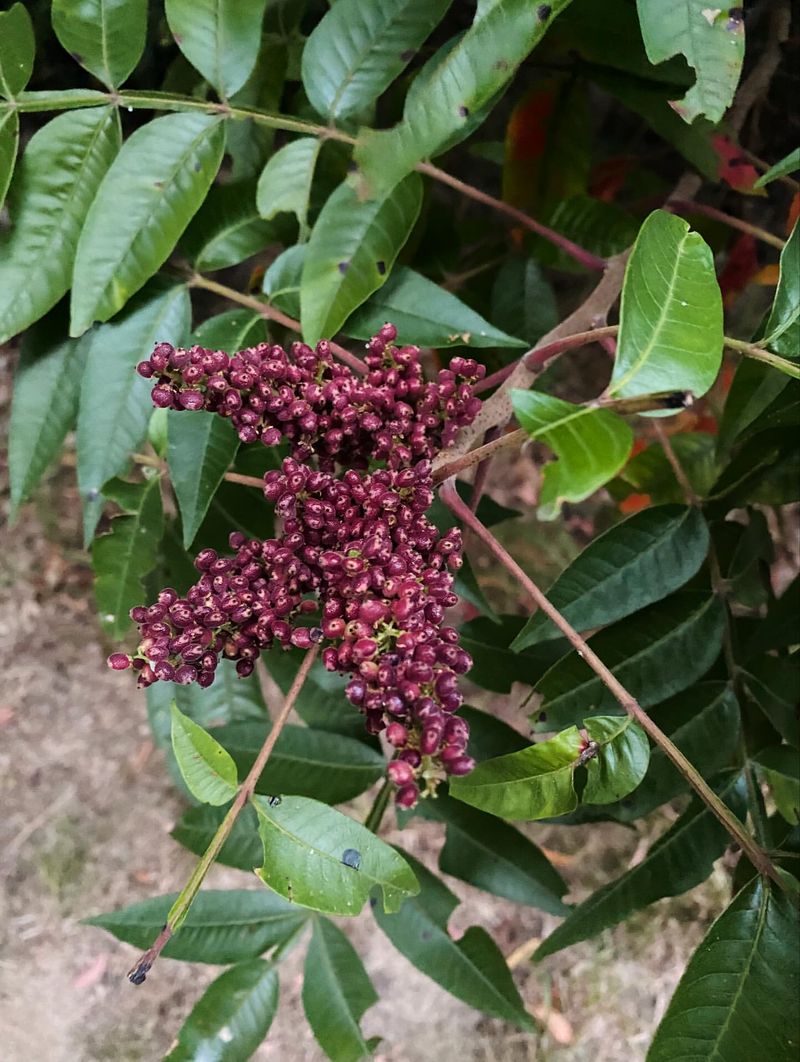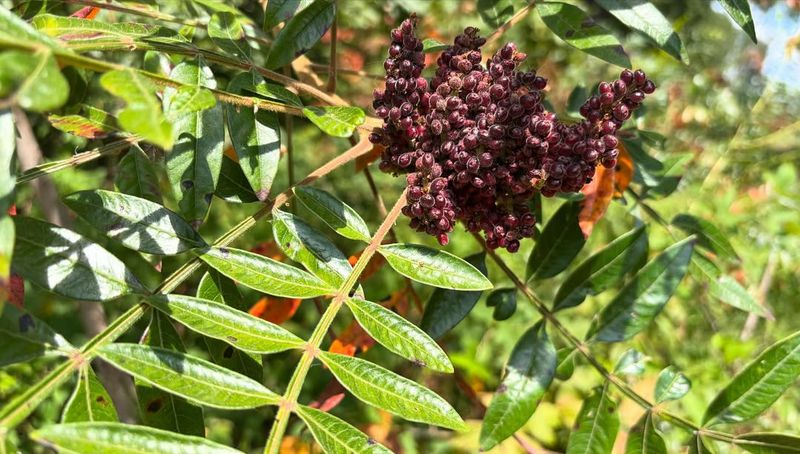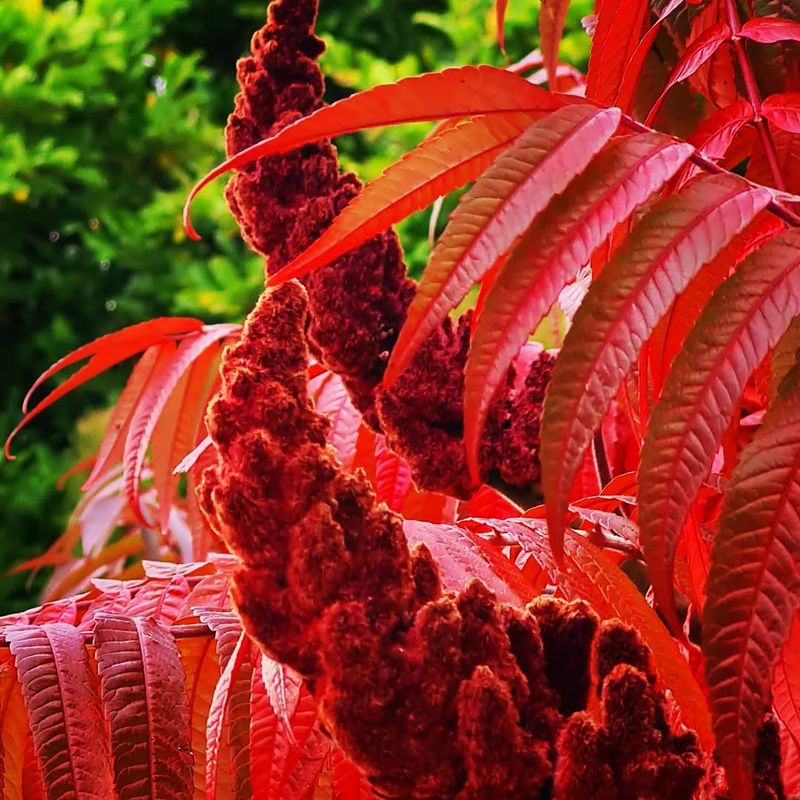Every fall in Maine, something magical happens when the staghorn sumac bursts into brilliant crimson color. This amazing shrub becomes a bustling hotspot where bees, birds, and other wildlife gather for one last feast before winter arrives.
Understanding why this plant attracts so many creatures reveals fascinating secrets about nature’s perfect timing and survival strategies.
1. Vibrant Red Fruit Clusters Feed Hundreds Of Bird Species
Staghorn sumac produces dense, cone-shaped clusters of fuzzy red berries that remain on branches well into winter. Over 300 bird species across North America rely on these nutritious drupes as a critical food source.
During October in Maine, migrating birds like robins, bluebirds, and thrushes stop to refuel on these energy-packed fruits. The berries contain healthy fats and oils that help birds build reserves for their long journeys south or prepare for the harsh winter ahead.
2. Late-Season Nectar Keeps Pollinators Buzzing Through Fall
While the berries shine in October in Maine, staghorn sumac flowers earlier in summer with greenish-yellow blooms packed with nectar. Bees absolutely love these flowers because they bloom when many other plants have finished flowering.
Honeybees, bumblebees, and native pollinators visit constantly throughout the blooming period. By providing nectar during this critical window, the sumac helps bee colonies build strength before winter. Without plants like this, many pollinator populations would struggle to survive the seasonal transition into colder months.
3. Dense Thickets Offer Perfect Shelter And Nesting Sites
Staghorn sumac grows in dense colonies that create protective thickets perfect for Maine wildlife. Birds build nests among the branches during spring and summer, enjoying safety from predators.
Come October, these same thickets become vital roosting spots where birds huddle together for warmth during chilly autumn nights. Small mammals like rabbits and chipmunks also take refuge under the canopy. The plant’s spreading growth habit forms natural walls that block wind and provide excellent cover from hawks and other hunting birds.
4. Peak Ripeness Coincides Perfectly With Migration Season
Nature’s timing is remarkable, and staghorn sumac proves this beautifully. The berries reach their peak nutritional value exactly when migrating birds need fuel most desperately.
October in Maine marks the height of fall migration, when thousands of birds travel southward. Staghorn sumac acts like a natural rest stop along their route, offering abundant food right when energy demands are highest. Birds instinctively know where to find these reliable food sources, returning to the same sumac groves year after year during their incredible journeys.
5. High Vitamin C Content Makes Berries Incredibly Nutritious
Did you know staghorn sumac berries contain more vitamin C than oranges? This nutritional powerhouse provides essential nutrients that wildlife desperately needs before winter.
The tart, lemony berries boost immune systems and provide antioxidants that help animals stay healthy during stressful migration or harsh weather. Native Americans traditionally made a refreshing drink from these berries, recognizing their health benefits long ago. For birds and other wildlife, this vitamin-rich food source can mean the difference between surviving winter or not making it through.
6. Brilliant Fall Foliage Creates Visual Beacons For Wildlife
When staghorn sumac leaves turn fiery red and orange in October, they create stunning displays visible from great distances. This isn’t just beautiful—it’s practical advertising for hungry Maine wildlife.
Birds flying overhead can easily spot these brilliant crimson beacons against the landscape, guiding them toward food sources. The dramatic color change signals that berries are ripe and ready to eat. Like a neon restaurant sign along a highway, the blazing foliage attracts customers from miles away, ensuring both plant and animal benefit from this colorful partnership.

